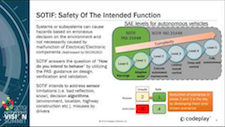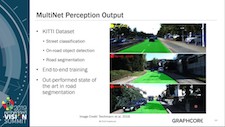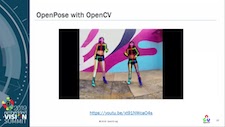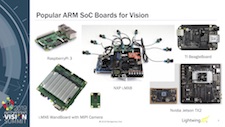| LETTER FROM THE EDITOR |
Dear Colleague,
We’re announcing a significant expansion of the Embedded Vision Alliance to encompass the full range of edge AI technology and applications, including our traditional domain of computer vision and visual AI. To better reflect our new scope, we’re changing our name to the Edge AI and Vision Alliance. We’ve even got a shiny new website. And, as you may have already noticed, the name of this newsletter has also been updated to reflect our expansion. We are seeing the same challenges in edge AI today that we saw in computer vision almost a decade ago. Then, as now, a powerful new technology had become ready for widespread use, but the companies and developers creating systems and applications were struggling to figure out how to best incorporate it into their products. And then, as now, technology suppliers needed data and insights to help them find their best opportunities, as well as connections to customers and partners to enable them to grow their businesses. Rest assured that our fundamental purpose remains the same: inspiring and empowering the individuals and companies creating intelligent systems and applications; building a vibrant ecosystem by bringing together technology suppliers, end-product creators, and partners; and delivering timely insights into relevant markets, technology trends, standards and application requirements. The difference is that our mission now includes not just vision but the full range of edge AI technologies and applications. We’re proud of the work we¹ve done since 2011 to bring news, trends, and resources in computer vision and visual AI to engineers, innovators, and business leaders. Now we’re looking forward to expanding that to include the full range of edge AI technologies and applications. For more information, check out our press release; stay tuned for more developments in the months ahead. In the meantime, I’d be delighted to hear any thoughts or answer any questions you might have. And please be sure to add edge-ai-vision.com to your safe sender list to get important updates and information, including our weekly newsletters. Brian Dipert |
| AUTONOMOUS VEHICLES |
|
Can We Have Both Safety and Performance in AI for Autonomous Vehicles? DNN Challenges and Approaches for L4/L5 Autonomous Vehicles |
| OPEN SOURCE-BASED DEVELOPMENT |
|
OpenCV: Current Status and Future Plans
Mallick also shares plans for the future of OpenCV, including new algorithms that the organization plans to add through the Google Summer of Code. And he briefly shares information on the new Open Source Vision Foundation (OSVF), on OpenCV’s sister organizations, CARLA and Open3D, and on some of the initiatives planned by these organizations. Building Complete Embedded Vision Systems on Linux — From Camera to Display |
| UPCOMING INDUSTRY EVENTS |
|
FRAMOS Tech Days Event: February 6, 2020, San Francisco, California Yole Développement Webinar – 3D Imaging and Sensing: From Enhanced Photography to an Enabling Technology for AR and VR: February 19, 2020, 8:00 am PT Edge AI and Vision Alliance Webinar – Algorithms, Processors and Tools for Visual AI: Analysis, Insights and Forecasts: February 27, 2020, 9:00 am and 6:00 pm PT (two sessions) Embedded Vision Summit: May 18-21, 2020, Santa Clara, California |
| FEATURED NEWS |
|
Ambarella Announces the CV22FS and CV2FS Automotive Camera SoCs for Advanced Driver Assistance Systems (ADAS) Synaptics Announces Its First Edge Computing Video SoCs with a Secure AI Framework Qualcomm Launches Three New Snapdragon Mobile Platforms to Address Ongoing Demand for 4G Smartphones Allied Vision’s Alvium 1800 USB Camera is Now Available with New CMOS Global Shutter Sensors Basler’s New Products in the ace 2 Camera Series Have 5 MPixel and 8 MPixel Resolutions |






